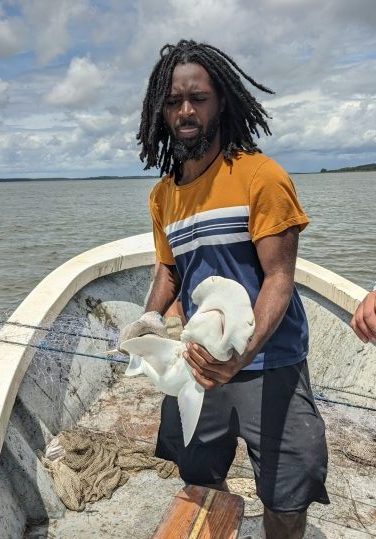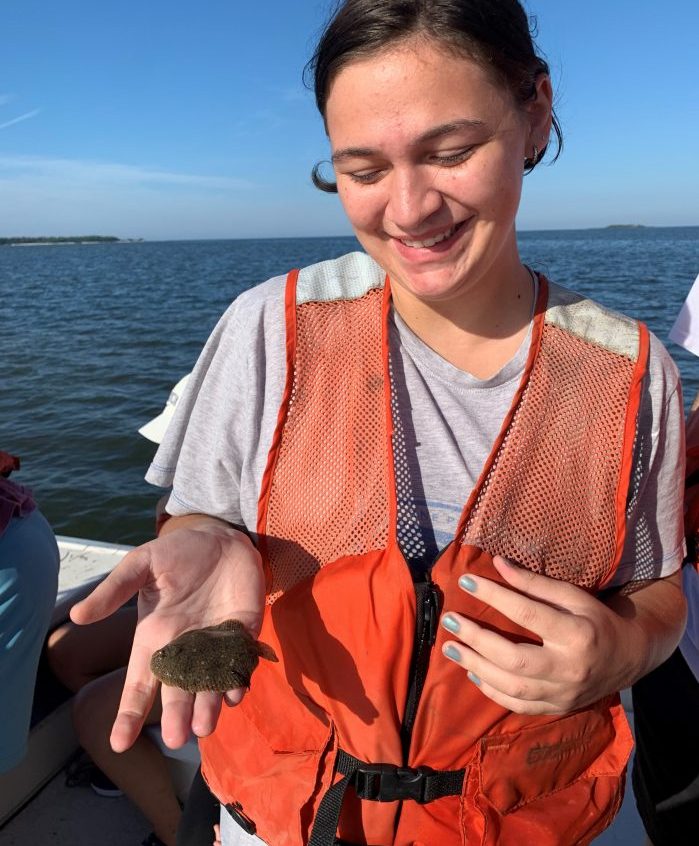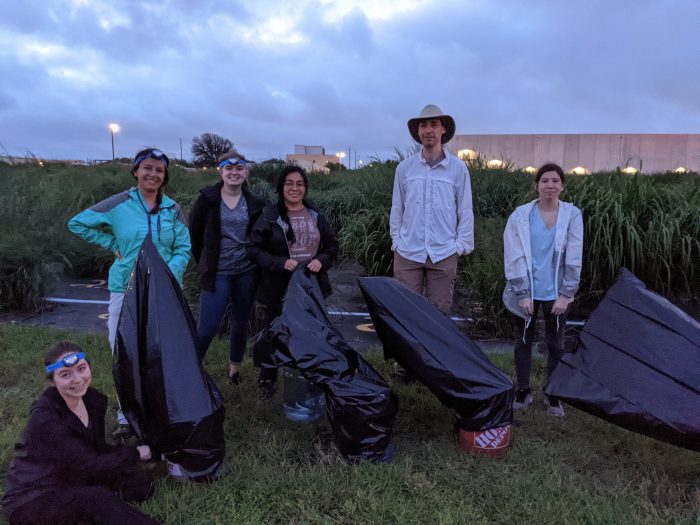
Most UF classes returned to in-person teaching in fall 2021, and COVID-related restrictions on research activities were lifted. The relaxation of COVID protocols presented enhanced opportunities for learning and research, as well as risks and challenges for members of our community. Here are a few snapshots of research and teaching experiences from summer and fall 2021.
Wesley Dillard, a PhD student with Dr. Gareth Fraser, was able to return to the field after COVID restrictions were lifted. Here, you can see Wesley handling a bonnethead shark (Sphyrna tiburo) near Charleston, South Carolina, as part of his research on the evolution and development of skin appendages in fishes. Wesley said, “Now that the restrictions of COVID have relaxed, I’m excited to be back in the lab and field doing what I love!”

With the lifting of COVID restrictions, Dr. Melissa Meadows organized a field trip to the Seahorse Key Marine Laboratory for her online Marine Biology course.
“We had a wonderful experience, and it was great to have the opportunity to meet my online students in person in an outdoor environment,” explained Dr. Meadows. “We trawled for organisms with the always charming and funny Captain Kenny, identified the organisms back at the lab, and took a beautiful walk while checking out organisms on the back beach area of the island. Highlight animals of the day were fringed filefish, gulf toadfish, offshore tonguefish, lined sole, flat-clawed and thinstripe hermit crabs, horseshoe crabs, a small spine sea star, and the curious bottlenose dolphins that came to check us out up close in the boat.”


Dr. Grace John’s lab road-tripped to Austin, Texas, to study the genetics of local adaptation in switchgrass (Panicum virgatum), a leading candidate for bioenergy production. Photosynthesis and stomatal behavior are studied under predawn and midday conditions. Predawn conditions, where plants are at hydraulic equilibrium with soil, are maintained by keeping the plants in a dark and humid environment inside plastic bags.

Switchgrass plants are brought into the lab to measure predawn and midday water potentials. Understanding the genetic drivers of hydraulic responses may lead to breakthroughs in breeding for drought tolerance.